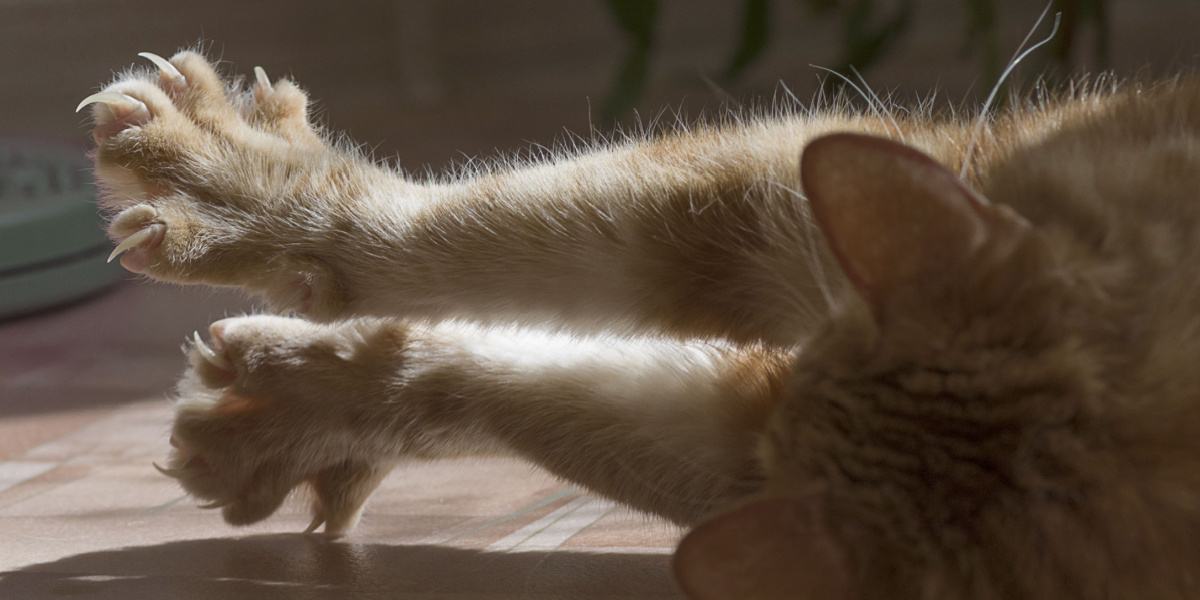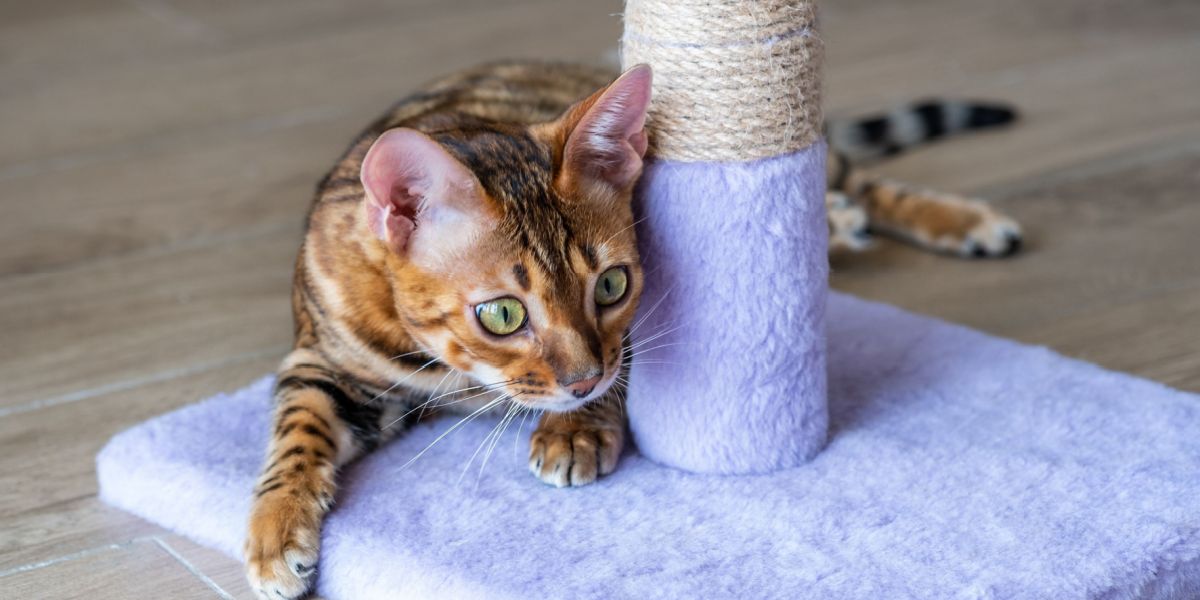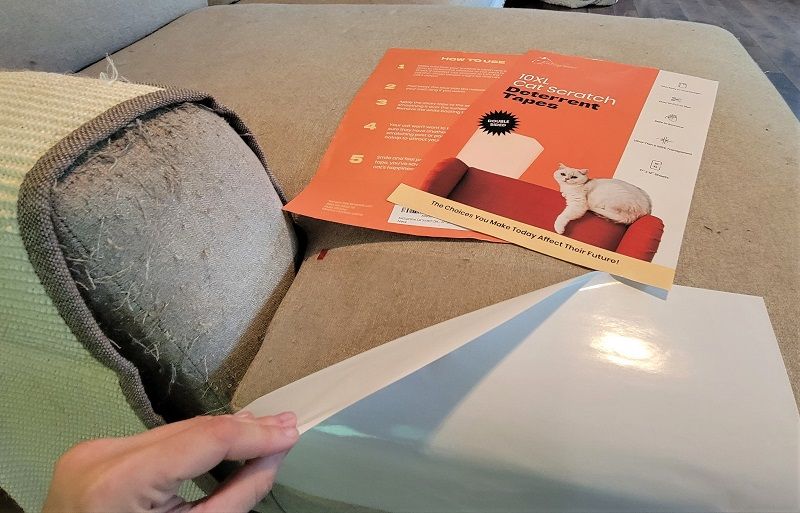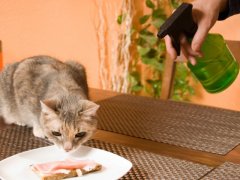
Scratching is, unfortunately, part and parcel of having a cat. It is a natural cat behavior and sometimes your cat might not understand what they can or cannot scratch. When they use their claws on you or your sofa and curtains, it can be challenging to deal with.
Perhaps you’ve heard of declawing and thought it might be the solution. Read on to find out more about what declawing involves, why it is not recommended, and better alternatives to consider.
What Is Declawing?
Declawing, also known in veterinary terms as onychectomy, involves the removal of the third toe bone while under general anesthetic. The toe is made up of three bones and the third is the one associated with the claw.
Many people assume declawing involves only removing the claws and do not realize it is a major surgical procedure. It is essentially a partial toe amputation. A veterinarian will carry this out using a scalpel blade, surgical laser, or sterilized guillotine-type nail clippers.
Why Is Declawing Performed?
Elective declawing is requested by pet owners to prevent cats from scratching people and objects, such as furniture. The surgery is usually performed when cats are between 3 and 12 months of age. Most of the time, only the toes on the front limbs are declawed as cats generally don’t cause much damage with their back claws.
Why Is Declawing Not Recommended?
Declawing is a complex and painful surgical procedure. Elective declawing, when done so for human convenience, is an unnecessary mutilation that does not offer any medical benefits to cats. Declawing is illegal in many countries, including the United Kingdom, Australia, and New Zealand. In the United States, the procedure is outlawed in a handful of cities and counties, and completed banned in two states (New York and Maryland).
Complications occur in 50% of cats. These complications include pain, lameness, swelling, infection, and claw regrowth. Research has shown that declawing increases the risk of developing arthritis, back pain, and unwanted behaviors, such as inappropriate urination and defecation, aggression, and biting.
What Are Better Alternatives To Declawing A Cat?
Scratching is a natural feline behavior. It allows cats to mark their territory, leaving their scent as well as visual signals. Scratching also keeps their nails in good condition, through the shedding of the dead outer sheath. Declawing removes their freedom to express an instinctual behavior. Read on to find out more about pain-free alternatives that can be considered.
1. Provide Plenty Of Suitable Scratching Surfaces

You can reduce or eliminate damage to your things by giving your cat a variety of many different scratchers.
If you don’t want your furniture, curtains, and carpets to fall victim to your cat’s claws, then you must provide them with alternative scratching surfaces to fulfill their scratching needs. Scratching posts and pads come in many different forms. The key is to offer variety.
Vertical scratching posts should be of adequate height to allow your cat to stretch out fully on their back legs when scratching. Make sure the base is secure and stable so that the post doesn’t wobble or fall over while being used. Also offer horizontal scratching pads or mats so your cat has more choice.
You can choose scratchers made from various materials, including sisal rope and corrugated cardboard. Experiment with different materials to see what your cat prefers.
Take notice of where your cat has been scratching inappropriately and place a scratching post or pad close to it. It is also a good idea to have a suitable scratching surface positioned near where they usually sleep as cats like to stretch and scratch when they wake up.
2. Attract Your Cat To The Appropriate Scratching Areas
Catnip is a great way to make a new scratching post or pad more attractive to your cat if they are responsive to it. Sprinkle some catnip or use a catnip spray on the top and base. This will encourage your cat to make good use of their appropriate scratching surfaces.
Also consider playing with your cat close to the scratching post. Wand toys are great for this purpose as you can entice them to reach up on to the post with their paws while they are grabbing the toy.
3. Use Positive Reinforcement
Scratching is a natural behavior for your cat and they need to learn what they can or cannot scratch. Though having a cat that scratches furniture can be frustrating, it is important not to resort to punishment for undesirable behaviors. Avoid using water sprays to squirt them and loud noises to deter them, as this can frighten them and damage the bond you have with them.
Instead, positive reinforcement should be used when the correct behaviors are displayed. If you see your cat using the appropriate scratching surfaces that you have provided for them, give them plenty of attention and treats as a reward.
4. Make Unsuitable Scratching Surfaces Less Appealing To Scratch

Deterrent tape can interrupt the scratching behavior long enough for you to redirect it somewhere appropriate.
Before you try this option, ensure you have provided your cat with appropriate scratching alternatives. Cover areas that you don’t want your cat scratching with cling film, double-sided tape, or aluminum foil to make them less attractive. Chairs and sofas can also be covered with plastic sheets or throws and blankets.
5. Provide A Stimulating Environment
Destructive behavior often stems from stress and/or boredom. Ensure your cat has plenty of environmental enrichment that stimulates them mentally and physically. If you have multiple cats, check that you have sufficient food and water bowls, and litter boxes, so that any competition for resources is eliminated.
6. Regular Nail Clipping
Removing the sharp points of your cat’s nails and keeping them short is a good way to prevent injury and damage. This can usually be done every two weeks or so but varies from cat to cat. It is best to get cats used to having their nails clipped from a young age as it makes the procedure much less stressful for everyone involved.
If you do not feel comfortable or confident with cutting your cat’s nails, contact a groomer or your veterinary clinic for help.
7. Use Nail Caps
Nail caps, such as Soft Paws, are soft vinyl covers that are applied over your cat’s nails with adhesive glue. They stay in place for around four to six weeks and fall off when the outer nail sheath is shed. These vinyl nail caps are a better alternative to declawing because cats can still scratch and extend and retract their nails.
8. Seek Help From A Feline Behaviorist

When all else fails, a professional educated in feline behavior can often help.
Perhaps you have tried some of the above options, but your cat is still destroying your furniture with their scratching. If that is the case, consider contacting a feline behaviorist. They will evaluate your cat alongside their home environment and lifestyle, before coming up with a management plan to help you modify your cat’s unwanted behaviors.
Final Words
Hopefully, by this point, you have come to realize that declawing is not the perfect solution for your cat’s scratching behavior. There are many humane and pain-free alternatives that can be considered, as discussed above.
Whenever we try to modify undesirable behaviors, it can take a lot of time and patience. In the case of destructive scratching, this effort is worthwhile if it means avoiding invasive surgery. Your veterinarian can also be a source of help and advice should you need it.
Also Read: Can You Discipline A Cat?
-
Atkinson, T. (2018). Practical Feline Behaviour. Oxfordshire, UK: CAB International
-
Fossum, T. (2013). Small Animal Surgery (Fourth Edition). Elsevier Mosby
-
Martell-Moran, N. K., Solano, M., & Townsend, H. G. G. (2017). Pain and adverse behavior in declawed Cats. Journal of Feline Medicine and Surgery, 20(4), 280–288. https://doi.org/10.1177/1098612x17705044
-
Schwartz, S. H. (2011). Onychectomy & Tendonectomy. Clinician's Brief. Retrieved November 19, 2022







